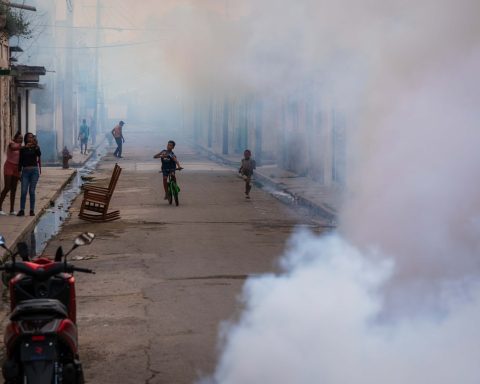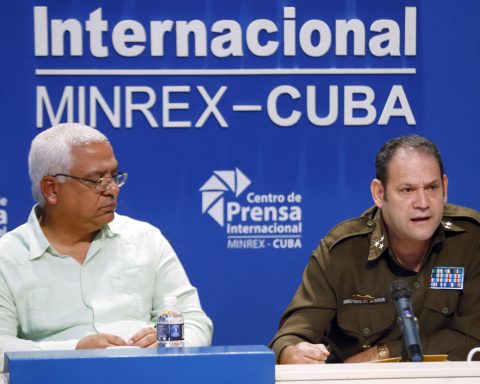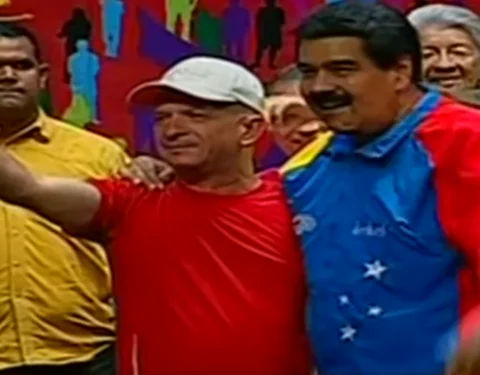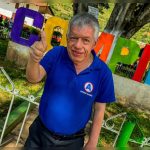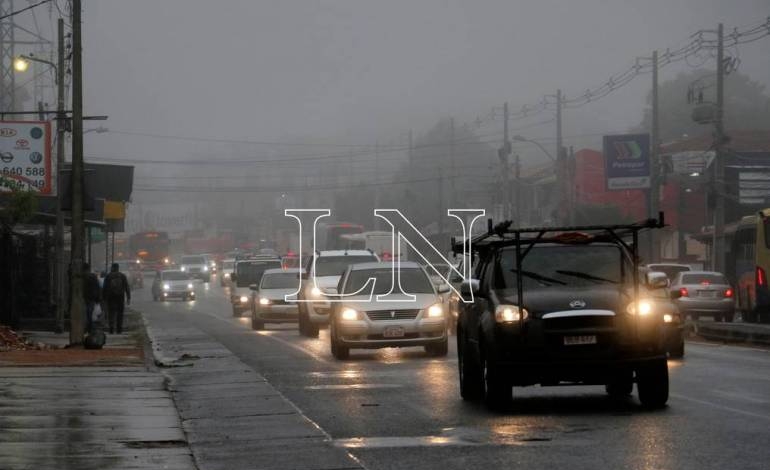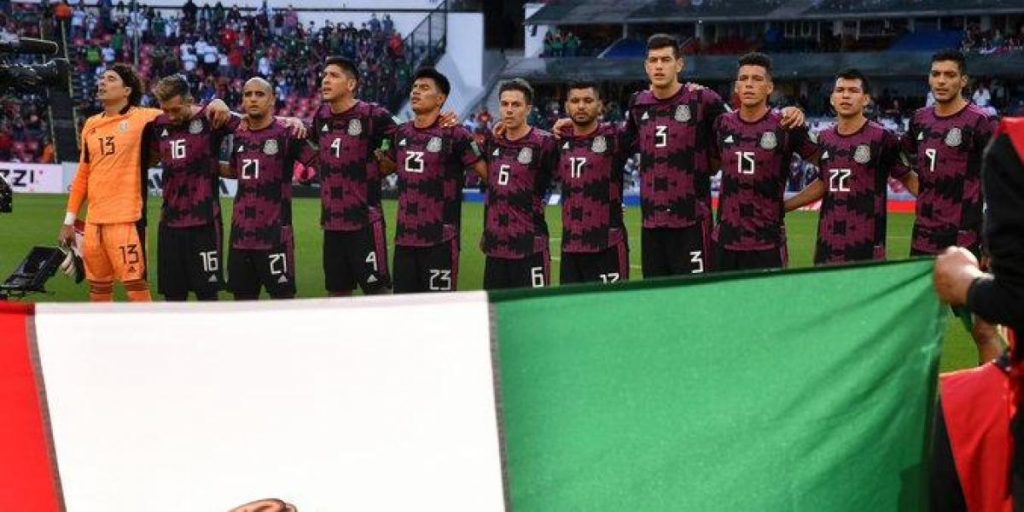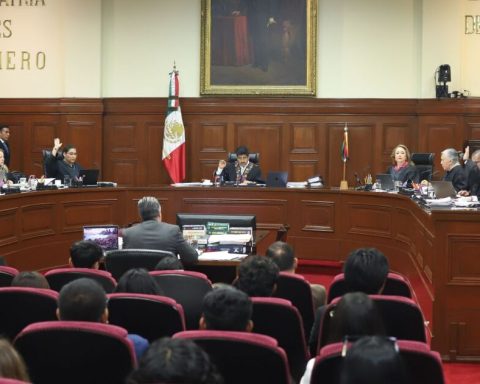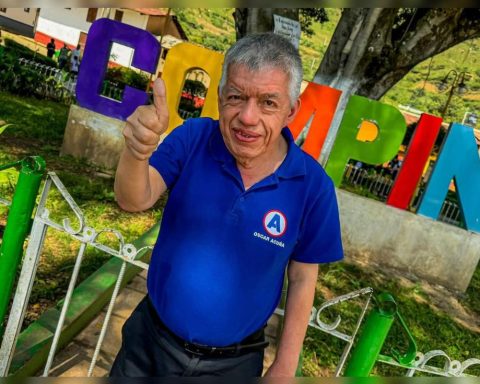Those writers of Virgilio Piñera’s story were accused of the crime of graphomania, and of course, they would continue to write whenever they wanted … Graphómano is the one who has the need to write, everything that happens, everything that he sees. Guillermo Carmona is a graphomaniac par excellence, from the age of 8 he already had the need to tell his own stories.
“I have always had a theory, as they say on the Internet, I have no evidence but no doubts, that all of us, in some way, have a writer inside and if we are going to generalize more, I say that we all have a need to express ourselves through of art”.
“Regarding literature, in high school the girls had verse notebooks, they burned the edge of the leaves, they drew a heart and an arrow inside and they put a poem that usually spoke of some kind of unsatisfied adolescent platonic love. Well, I started a little earlier. I was always quite a hyperactive and imaginative child, I even remember that when I walked through the streets I would talk to myself and a friend of my mother who saw me told her and she thought I was developing some kind of madness ”.
“The first thing I wrote was a fanfiction about The Black Angel, a series that was all the rage in my elementary school. I wrote it two-handed with a friend and then created an imaginary world, like an epic fantasy in the style of the Lord of the Rings movie.
My mother, who is a family doctor, had a patient who was a poet, Laura Ruiz, and she told me to teach her the texts. Laura sent me to a children’s literature workshop at the Casa de la Cultura ”.
“I was very excited about my first writings, but when I arrived they told me that the lady who gave the courses was on a mission to Venezuela, that cut me off a bit at that time. I kept writing my little things and later in high school I lame, it’s a little more impulse and I start to write other more serious things ”.
“That is why I think it is important to maintain effective literary workshops for children who, like me, have some kind of literary intention.”
Have you always wanted to be a writer?
“I think that something fundamental to be a writer is reading. If I say that I have always wanted to be a writer, I would have to explain that I have always liked to read and that I learned to read by mimesis.
“My dad was a great reader. He went to bed for noon to read. He liked crime literature, especially American literature from the 1920s to the 1950s or so. One of my current favorite writers, Raymond Chandler, It’s because of my dad, who almost forced me to read it.Here he is well remembered because Leonardo Padura pays tribute to him and his novel The Man Who Loved Dogs takes its title from a Chandler story.
“I was always like a bookworm, and now that I have the internet I can download books, luckily in Cuba there is no copyright.”
“Something very curious happened to me recently. I was in an activity in Medical Sciences and a lady asked me if I was the boy who was always going to the library to look for books. That comforted me a lot, because I haven’t been to a library for at least fifteen years and that tells you the essences of one. I have always been a boy who likes to read a lot ”.
Who are your influences?
“Of all the authors I have read I have taken something. From Dostoyevsky’s slightly dark characters, which was when I discovered him, when reading Crime and Punishment, I was fascinated; the impressive capabilities of the language seen as a great playing field, which Cabrera Infante teaches us, even the grotesque in the works of Virgilio Piñera, which can give a very enlightening message, Hemingway’s dialogues … and thus, from each writer, one takes his little pieces until he develops his own style “.
Besides being a writer, you are a journalist. How do you handle the relationship between literature and journalism?
“Art has two main functions, one cognitive-communicative, which is the message that you want to convey when you write, paint … and the other function is aesthetic, the beauty of what you do. All of this is based on the social construct that we it indicates what beauty is, contextualizes it and puts it in conjuncture.
“Journalism tends more towards the cognitive part, because it is more informative, to inform something or to interpret a part of reality, while literature tends more towards the aesthetic, towards the beauty of life, and when I say beauty I do not mean a sweetened text full of metaphors with an overdose of lyricism, not at all, simply the beauty of life interpreted by a vision, the subjectivity of a person.
“One moves between these two worlds, which have many points in common but at the same time these points of difference, then, literature helps you to make journalism much more casual, more beautiful, with more expressive possibilities. I have always said that the academy is sometimes a chain that does not let you let go of your creativity and that is what literature helps you with.
“Meanwhile, in literature, journalism teaches you about the social responsibility that a writer should have. When you are a journalist you understand more about the need to have a socially active role with respect to your time, about the needs of helping , of trying to change society from your bit. That has been reflected a lot in my literature, where I usually like to deal with social issues and not only on the surface but also try to find out why it happens. I think that that investigative part of journalism has contaminated a lot my literature “.
Grafómanos is a project that you direct that includes a literary workshop and a peña. How did it come about? What are your goals?
“When I started writing I wanted to eat the world, the idea of becoming famous, and I think that everyone somehow passes by, but I realized that I was very lonely because I wrote texts, texts and texts, but I had no one to guide me or nowhere to go, until I started at Yanira Marimón’s Cintio Vitier workshop.
“Then I entered the AHS and I realized that there is a union organization that can serve as a platform to develop projects and I decided that what happened to that 18 or 19-year-old boy that I was, did not have to keep happening. This is how the Grafómanos project arose. Graphomania is a syndrome of the need to write everything that happens around you. It is based on a story by Virgilio Piñera. They also say that Martí was a graphomaniac, that he kept news where he wrote down everything that It seemed to him of interest that he saw in his ordinary life and you kept them in the pockets of his sacks. I believe that this is the spirit, to bring together all those young people who have that prevailing need to write.
“The project consists of two main moments, one part is a workshop, which is much more technical, with the idea of reviewing texts, giving ideas, suggesting readings, discussing works … I believe that nowadays a writer should no longer just have to sit down to write and release the texts to the world, the writer has to be the promoter of his own work, and that is why the peña is created, the second moment of the project.
“It is a way for young authors to promote their work, a way to create links with other artistic manifestations, and break these ironclad schemes that exist regarding the fact that there must be trova or symphonic music in literary clubs, we have invited rock groups, rappers …
“We are boys from 18 to 35 years old who live in the same city, we share the same geographical, political and social context and we have a discourse that we may not carry in the same way but there is unity. Therefore, the great objective of Grafómanos is to join a generation “.
The killing is a cultural fact related to the cultural experiences of the Matanzas people. How is this presented in your work?
“The killing, the habanerity … any type of identity will always be reflected in the author’s work even if he does not want to. In the sense that it is the social and geographical environment where you live. A person who lives near a A bridge or a river is not going to write to you about the sea in the same way as a person who lives in a city without a sea, without a bridge and without a river, for example.
“A whole historical tradition that Matanzas has also intervenes with respect to literature, not in narrative, which is what I normally do, but in poetry. I always say that being a narrator in Matanzas is like going against everything. Sometimes I see it that way, but currently a new generation is emerging that is taking steps forward.
“I feel like a very proud man from Matanzas and I like that in my work, both journalistic and literary, Matanzas shows.”
As a journalist and director of the cultural page of the Girón newspaper, what do you consider to be the challenges that cultural journalism has in Cuba and in Matanzas?
“We have to leave the old idea that journalism is only, or the most important value of journalism is the news value, many times the immediacy of the news is lost, because we live in an interconnected world where anything that happens can have a witness to send it to you and photos of a certain cultural event that some of the people who were there uploaded to the network … So, if we can’t have the immediacy value, we have to look for other values. I think it is where cultural journalism fails.
“It is necessary to do a more in-depth cultural journalism, of analysis. Understand that cultural journalism is not only an informant, it is a creator of aesthetic taste and when you are writing about something you are recommending it, you are trying to convey to the person that He is reading you, listening to, seeing, the same sensations that you felt when you faced the cultural fact and that is very important.
“The idea is also to create, we live in a culturally colonized society even if we don’t want to. We consume a lot of the western canon, products that are built and developed for purposes ranging from creating a consumer culture to whitewashing real world problems. A very important thing is to create critical viewers and readers, to give people the tools, not to tell them: don’t consume this, the journalist cannot say that. If you are going to consume it, because you think it is entertaining, you have to have the tools to understand that what you are seeing has anti-values and those are the functions that cultural journalism suffers from in Cuba and that, in one way or another, you have to try to push forward. “


